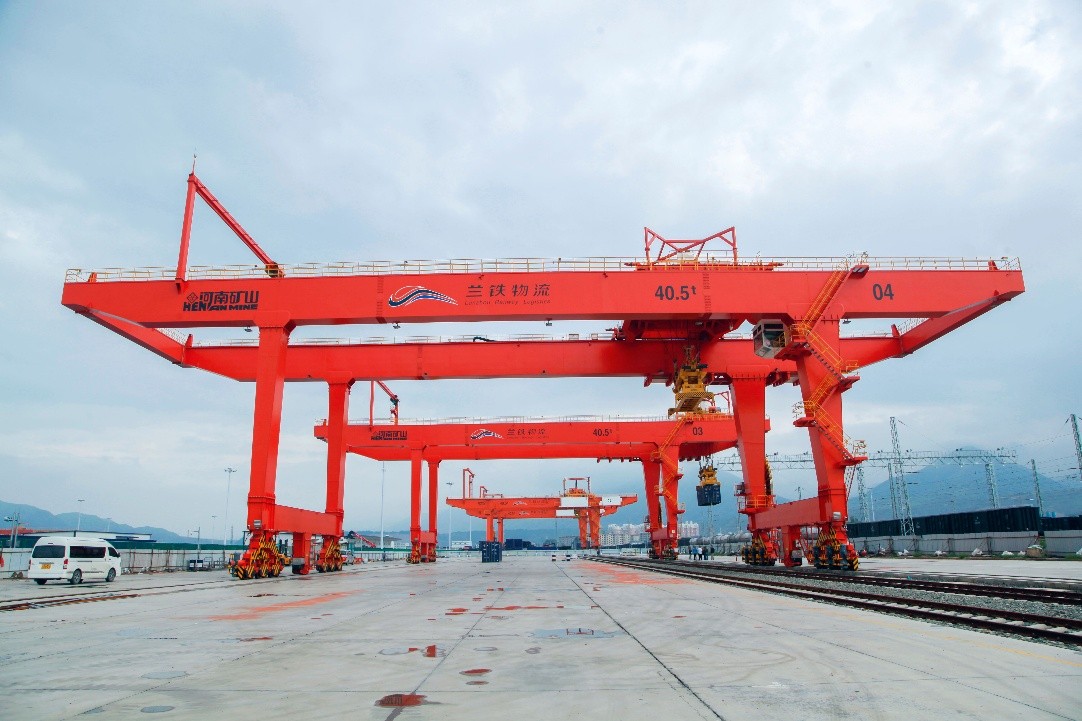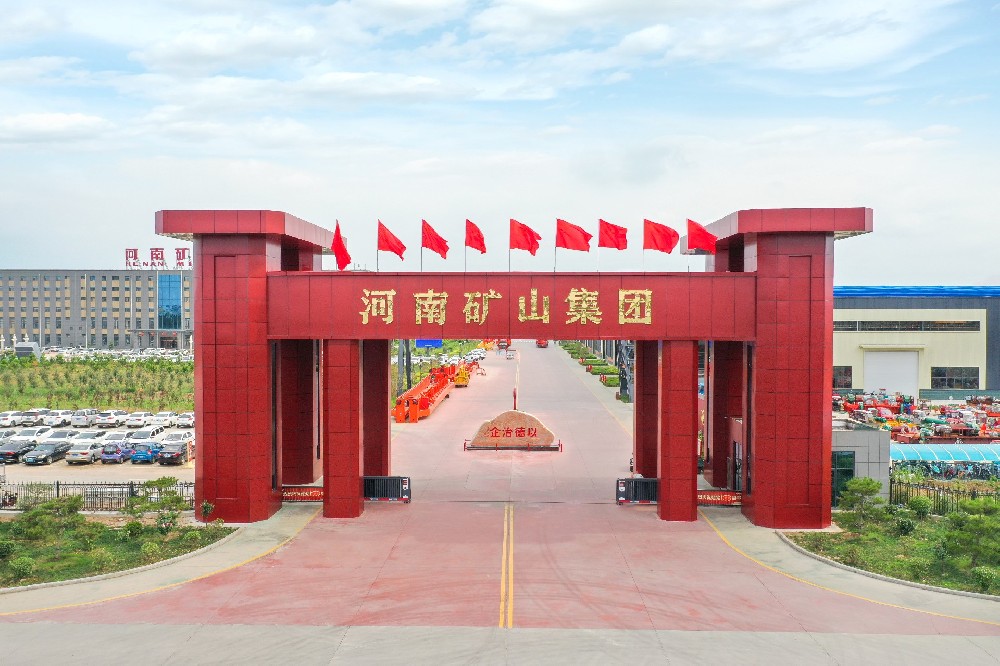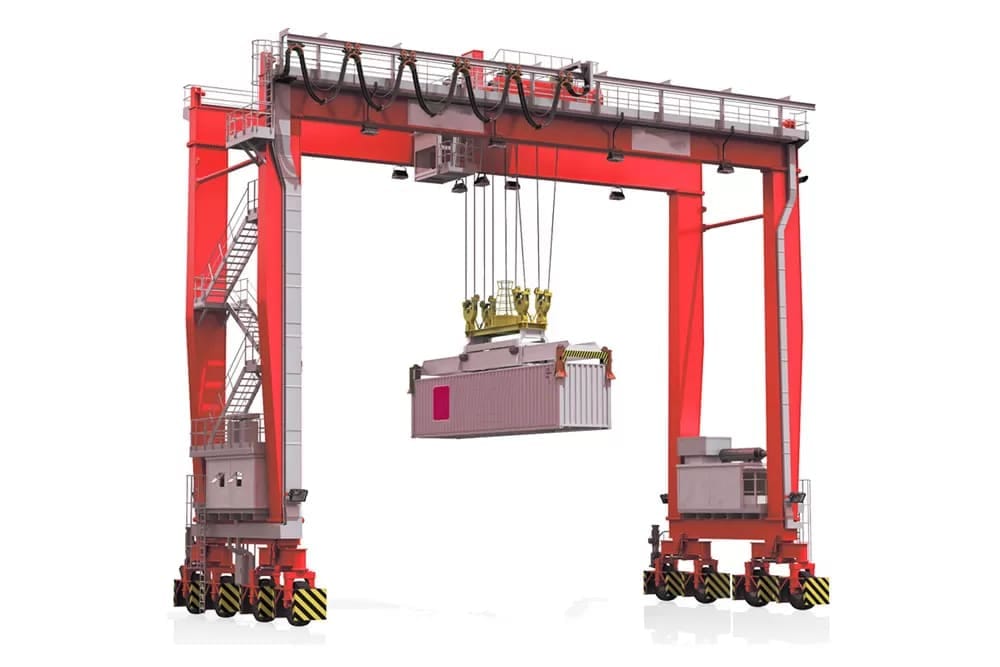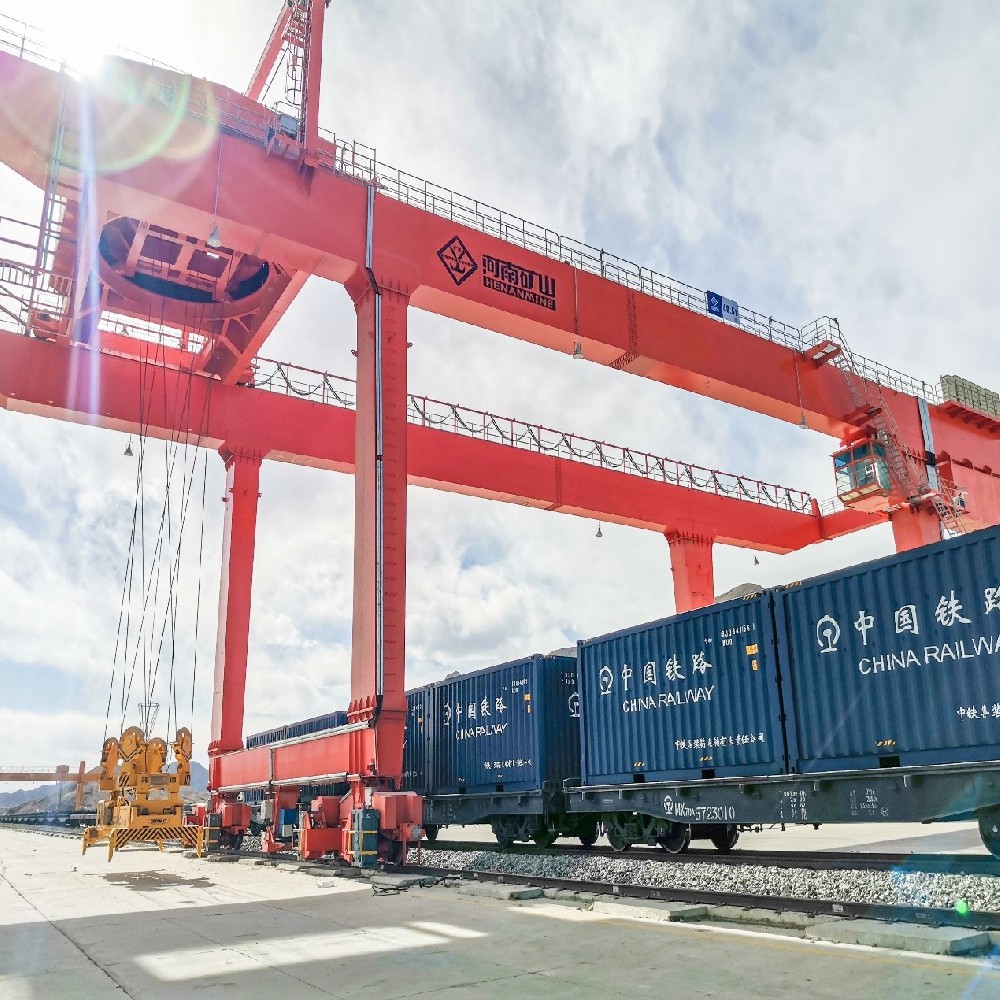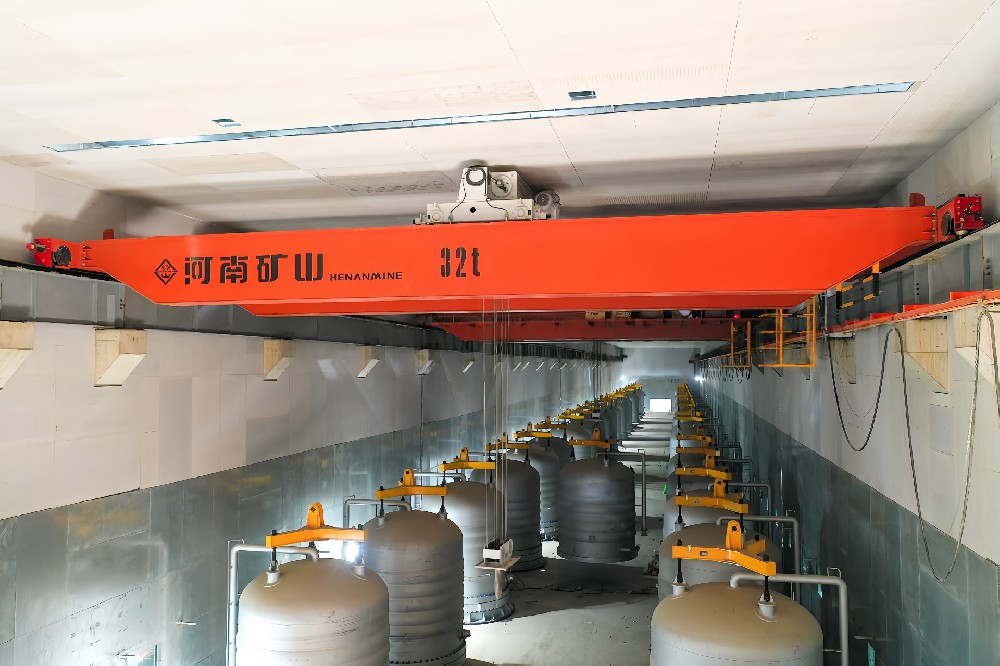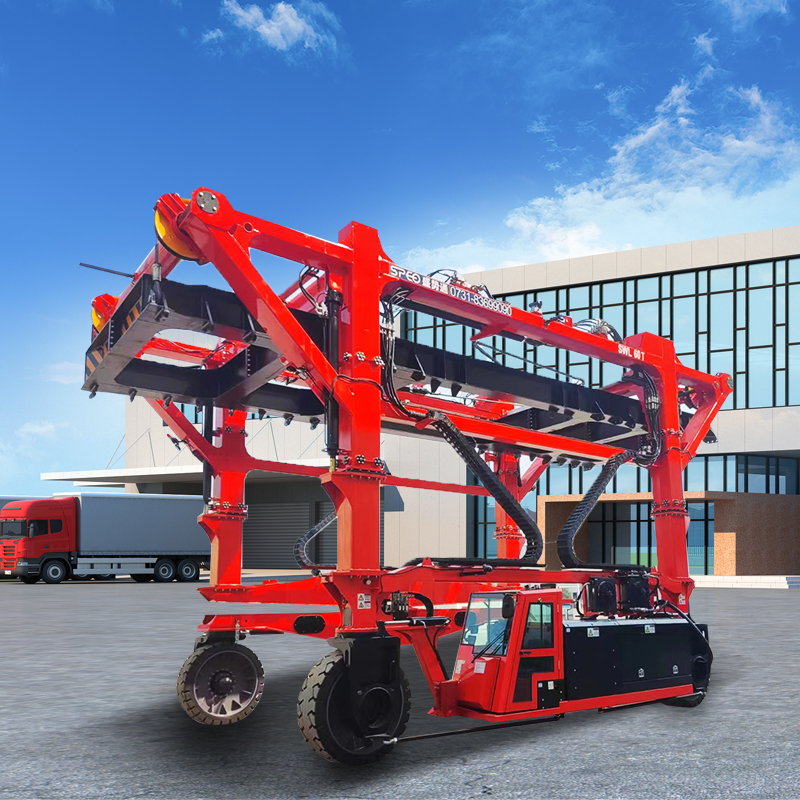- Gantry Cranes: The "Heavy-Duty Handling Masters" in Water Conservancy and Hydropower Projects
-
Release Time:2025-07-14 10:06:45Share:
In the grand scenario of water conservancy and hydropower projects, from the pouring of towering dams to the installation of giant hydro-generator sets, from the precise positioning of 10,000-ton gates to the rapid transportation of emergency rescue materials, there is always a type of equipment that runs through the entire process like a "steel giant" — this is the gantry crane. As a large lifting equipment erected on ground tracks and spanning the operation area, gantry cranes, with their super lifting capacity, flexible mobility, and ability to adapt to complex sites, have become indispensable core equipment in the construction and operation of water conservancy and hydropower projects. Among the many gantry crane manufacturers, Henan Mine Crane Co., Ltd. stands out, providing many high-quality and reliable equipment for the water conservancy and hydropower industry, with its products and technologies widely used in various water conservancy and hydropower projects.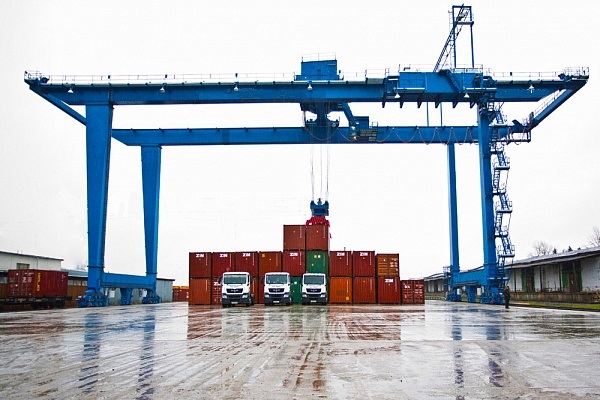
Gantry cranes (also known as "portal cranes") are composed of core structures including a gantry (main beam, legs), a trolley traveling mechanism (moving along ground tracks), a crane trolley mechanism (moving along the main beam tracks), and a hoisting mechanism (responsible for lifting and lowering goods). Its most notable feature is the "cross-span" operation: the main beam is supported by legs on both sides, forming an open "gate-shaped" space, which can not only cover a large area on the ground but also allow ground vehicles and equipment to pass under the gantry. This characteristic makes it highly advantageous in water conservancy and hydropower projects with open sites and large operation ranges.
According to the needs of water conservancy and hydropower projects, gantry cranes can be divided into light-duty (<50 tons), medium-duty (50-200 tons), and heavy-duty (>200 tons) according to their lifting capacity; according to their structural forms, they can be divided into single main beam, double main beam, truss type, and box-type beam (box-type beams are more suitable for heavy lifting in water conservancy projects due to their strong torsional resistance and high bearing capacity); according to their movement mode, they can be divided into rail-type (running along fixed tracks with strong stability) and tire-type (can move on trackless sites with higher flexibility).
In water conservancy and hydropower scenarios, rail-type double main beam gantry cranes are the most common — their box-type main beams can bear loads of hundreds of tons or even thousands of tons. The legs on both sides can move along the operation line for long distances through tracks, and cooperate with the lateral movement of the trolley to form a "three-dimensional operation space", which perfectly adapts to the needs of linear distribution (such as dams, channels) or large-area operation areas (such as workshops, material yards) in water conservancy projects. Henan Mine Crane Co., Ltd. has strong R&D and production capabilities and can accurately customize various gantry cranes according to the actual working conditions of different water conservancy and hydropower projects. The company's technical team consists of more than 10 high-end industry experts and more than 200 intermediate and senior engineers. With rich experience and advanced technology, they can optimize the design of gantry cranes according to special requirements such as lifting capacity, span, and operation environment in the project, ensuring excellent performance, stability, and reliability of the equipment.
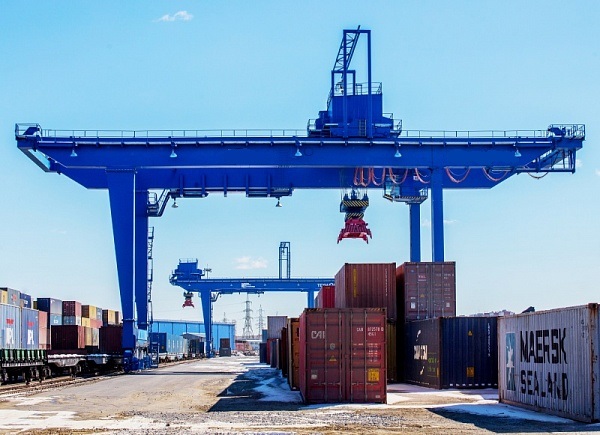
Dams are the core of water conservancy and hydropower projects, and their construction process can be called the "splicing of giant building blocks" — every step, from foundation excavation to dam pouring, from steel bar binding to formwork hoisting, is inseparable from the participation of gantry cranes.
In the dam pouring stage, dams are usually poured in layers and sections, and each layer requires a large number of steel formworks to be hoisted (the weight of a single formwork can reach 10-50 tons). At this time, gantry cranes with a span of 20-50 meters and a lifting capacity of 50-100 tons become the "main force": they move along the tracks on both sides of the dam axis, accurately hoist the formworks to the designated positions, and then cooperate with manual adjustment and fixing; after the concrete pouring is completed and the formworks are removed, they are responsible for transferring the formworks to the next operation surface. For example, during the construction of the Three Gorges Dam, multiple gantry cranes with a span of 30 meters and a lifting capacity of 80 tons operated simultaneously along both sides of the dam, hoisting more than 200 formworks per day on average, providing key support for the "rising" of the dam. In similar dam construction scenarios, the gantry cranes of Henan Mine also perform excellently. The gantry cranes produced by the company have efficient lifting and running speeds, and at the same time adopt advanced PLC + frequency converter communication control, which makes the operation more stable, safe, and reliable, greatly improving the efficiency and accuracy of formwork hoisting, and providing a solid guarantee for the smooth progress of dam construction.
In dam seepage prevention and structural reinforcement, the role of gantry cranes is even more critical. The construction of dam cut-off walls requires hoisting heavy grabs (weighing 50-100 tons) to excavate trenches tens of meters deep in soft foundations; and components such as steel mesh sheets (with a single piece weight of up to 30 tons) and prestressed anchor cables and anchors inside the dam also need to be accurately positioned by gantry cranes. At this time, the "micro-motion control" capability of the gantry crane is particularly important — through the fine adjustment of the hydraulic system, the hoisting accuracy can be controlled within ±5 mm, ensuring the tight connection of steel bars and the precise installation of anchors. In response to such construction needs, Henan Mine Crane Co., Ltd. has specially strengthened the micro-motion control function in the equipment design. Through advanced sensors and precise control systems, it realizes the fine adjustment of lifting, translation, and other actions, meeting the high-precision requirements in dam seepage prevention and structural reinforcement operations.
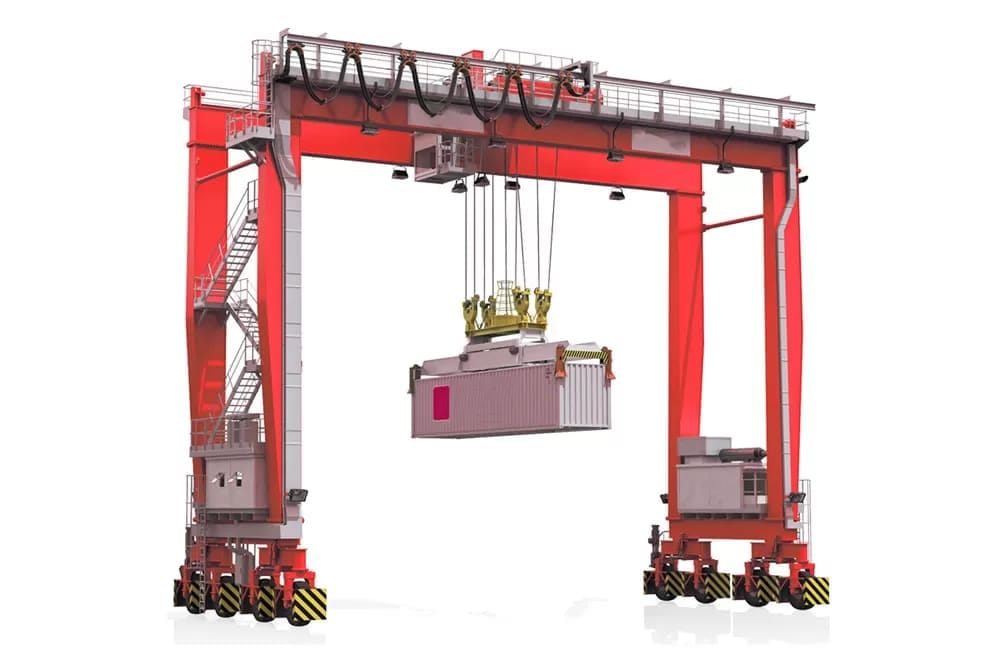
Water conservancy and hydropower projects are mostly located in remote mountainous areas or river valleys, with scattered material transportation and stacking sites, and emergency rescue requires rapid response — the "flexible handling" capability of gantry cranes shows unique advantages in such scenarios.
In material transfer scenarios, building materials such as steel, cement, and sand and gravel at water conservancy construction sites, as well as small parts such as bolts and bearings, are usually transferred by gantry cranes from "transport vehicles to material yards" and "from material yards to operation surfaces". For example, the steel processing yard of a large water conservancy project is equipped with a gantry crane with a span of 25 meters and a lifting capacity of 50 tons, which can lift entire bundles of steel bars (weighing 20 tons) from train carriages to the processing platform, and then transfer them to the dam pouring point after processing, with a daily transfer volume of 300 tons, greatly reducing manual handling costs. The gantry cranes of Henan Mine are efficient and flexible in material transfer. Their diverse lifting capacity and span options can adapt to material transfer needs of different scales. At the same time, the equipment is easy to operate and runs smoothly, which can quickly and accurately lift various materials to designated locations, improving the efficiency of material transfer and reducing project costs.
In emergency rescue scenarios, gantry cranes are even more of a "rapid response force". When dangerous situations such as dam piping and gate failures occur, emergency rescue materials (such as steel cages, anti-seepage membranes, and high-power water pumps) need to be hoisted quickly. For example, during the flood control period in the Yangtze River Basin in 2020, a reservoir had a dam leakage. Rescue workers used a 60-ton tire-type gantry crane on-site to hoist 50 steel cages (each weighing 8 tons) to the leakage point within 1 hour, and quickly built an anti-seepage wall with sandbags, successfully controlling the dangerous situation. The tire-type gantry cranes produced by Henan Mine Crane Co., Ltd. are characterized by strong mobility and good off-road performance. During emergency rescue, they can quickly reach the scene and put into operation, playing an important role in timely controlling dangerous situations and ensuring the safety of water conservancy projects.
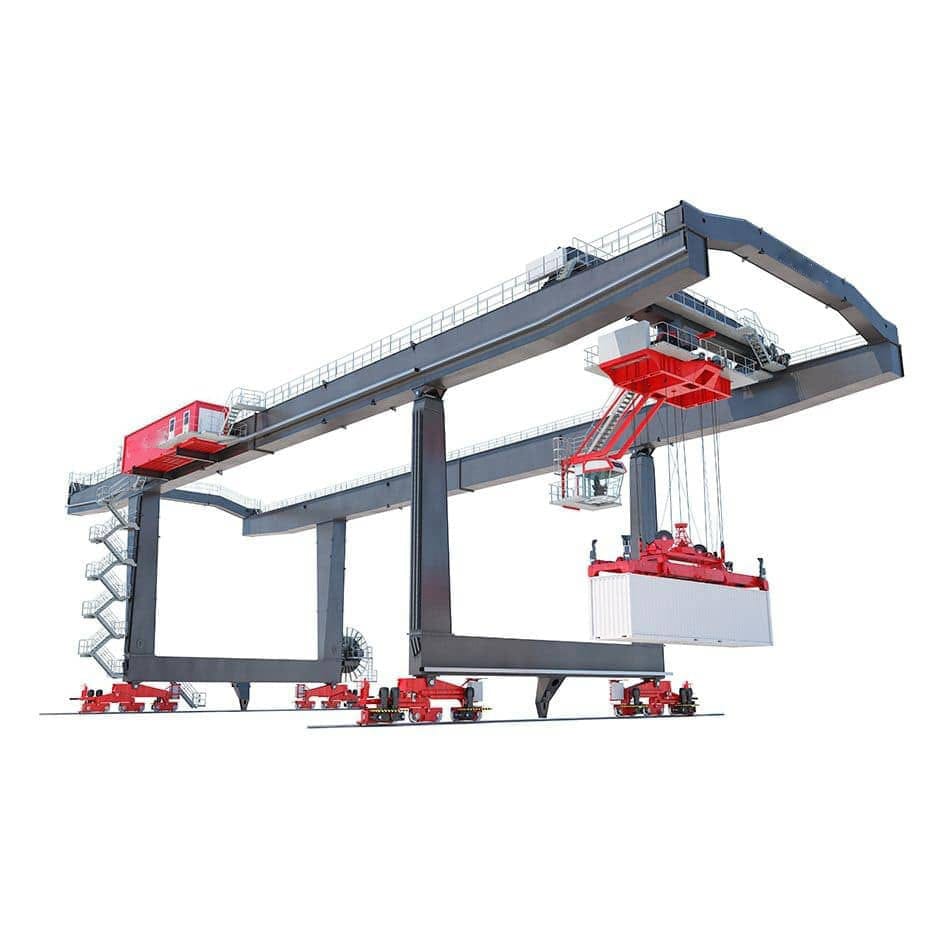
The operating environment of water conservancy and hydropower projects is often harsh — there are strong winds in riversides and river valleys, water vapor contains sediment and salt, and it may freeze in winter, which all put forward special requirements for the design of gantry cranes.
Wind resistance design: In riverside projects such as the Three Gorges and Gezhouba, gantry cranes need to be able to withstand instantaneous winds of force 10 or above. A "windproof anchoring system" is added to their design: when the wind speed exceeds force 6, the crane can be anchored on the track through hydraulic devices, and cooperate with active windproof wheels (to increase friction with the track) to prevent the equipment from being blown by the wind. Henan Mine Crane Co., Ltd. has rich experience in wind resistance design. The windproof anchoring system of the gantry cranes produced by the company has undergone strict testing and optimization, which can ensure the stability of the equipment in harsh strong wind environments and effectively guarantee the safety of engineering operations.
Anti-corrosion design: In response to corrosion from water vapor and salt, the metal structure of gantry cranes needs to undergo a three-layer anti-corrosion treatment of "sandblasting derusting + epoxy primer + chlorinated rubber topcoat". Key components (such as bearings and gears) are made of stainless steel to ensure a service life of more than 20 years in humid environments. Henan Mine strictly controls the anti-corrosion process of the equipment, following high standards from material selection to processing technology, enabling the gantry cranes to operate stably for a long time in the humid and corrosive environment of water conservancy and hydropower projects, reducing the maintenance cost of the equipment and improving the use efficiency of the equipment.
Low-temperature and dust-proof design: In high-altitude water conservancy projects (such as hydropower stations in Tibetan areas), gantry cranes need to adapt to low temperatures of -20℃, and the hydraulic system uses low-temperature anti-freezing oil; in dusty Gobi areas, components such as the motor and reducer of the equipment need to be equipped with dust covers to prevent sand and dust from entering. Henan Mine has fully considered the environmental differences of water conservancy projects in different regions and customized corresponding low-temperature and dust-proof solutions for gantry cranes, ensuring that the equipment can work normally in various complex environments and meeting the needs of the construction and operation of water conservancy and hydropower projects in different regions.
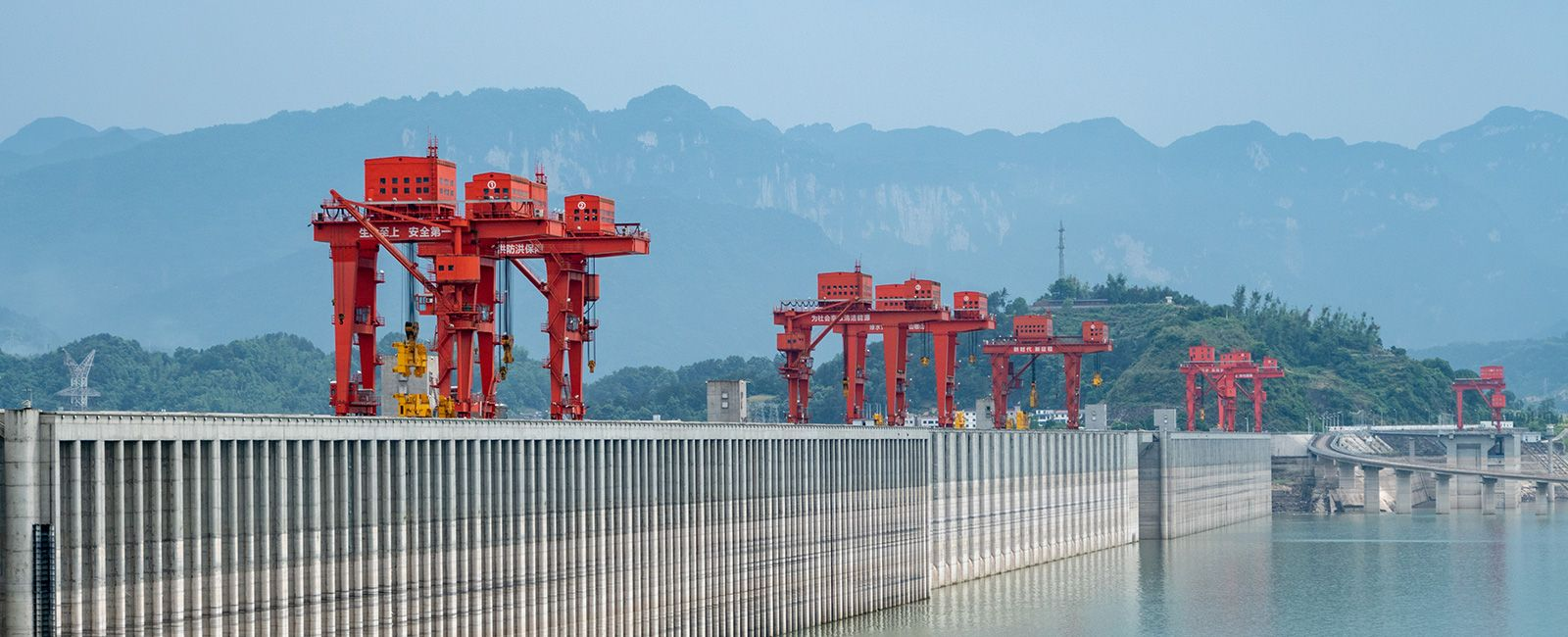
Conclusion: The "Invisible Backbone" of Water Conservancy Projects
From every brick and tile of the dam to the roaring operation of generator sets, from the precise opening and closing of gates to the race against time at emergency rescue sites, gantry cranes, with their "thousand-jin lifting power" and "millimeter-level" precision, run through the entire life cycle of water conservancy and hydropower projects. They are not just lifting equipment, but also the "executors" that turn water conservancy project blueprints into reality, and the "collaborative partners" for humanity to transform nature and utilize water resources.
With the development of intelligent technologies, the gantry cranes of Henan Mine in the future will become even "smarter" — realizing unmanned hoisting through 5G remote control, achieving fault early warning via the Internet of Things system, and simulating hoisting processes with digital twin technology... However, no matter how technologies advance, their position as the "heavy-duty handling masters" in water conservancy and hydropower projects will remain irreplaceable.
